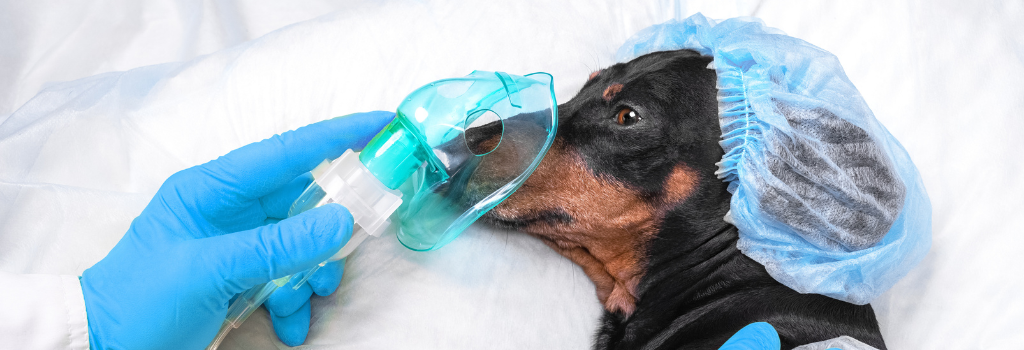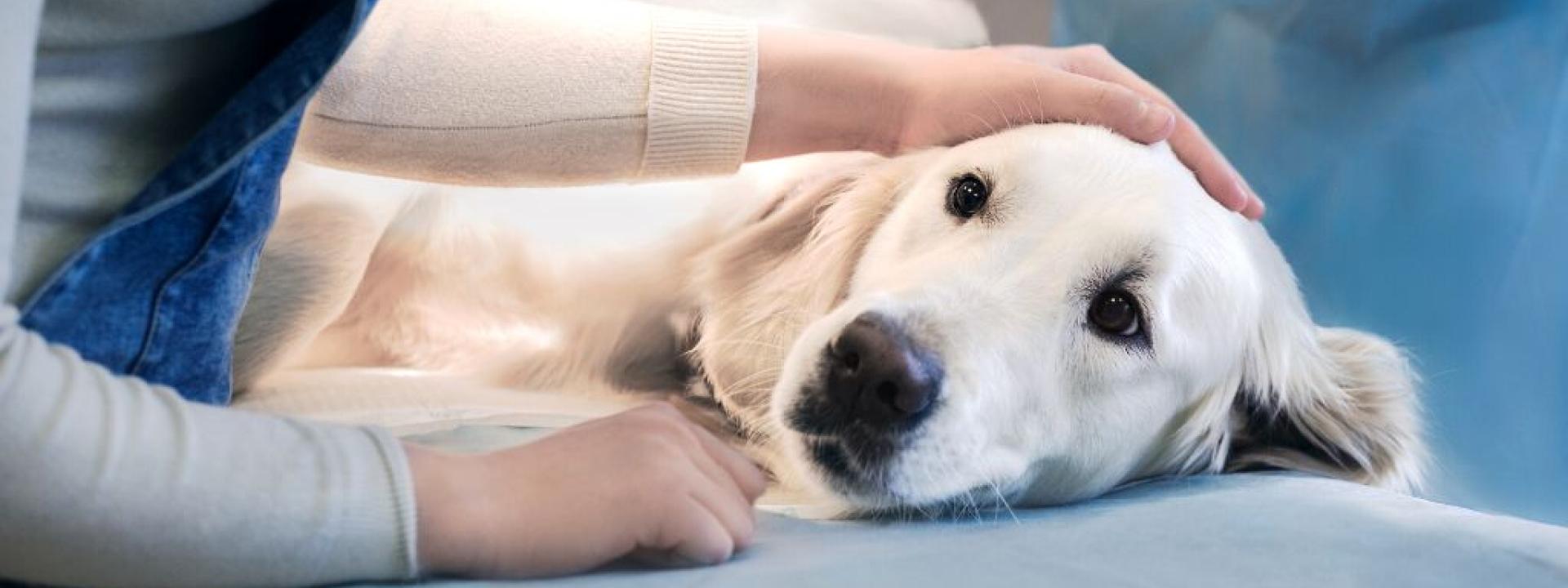If your dog has been exhibiting some symptoms indicating gastrointestinal or respiratory distress, but the cause is yet to be determined, your veterinarian might recommend an endoscopic examination. Endoscopy allows doctors to perform a deeper examination of your pet’s internal systems in order to identify any elements that may be causing your dog illness or discomfort.
Pet owners often have many questions regarding the course of the endoscopic exams, as it requires your dog to be under anesthesia. At Veterinary Medical Center, we want to ensure you get all the answers you need, so reach out today at (510) 441-8500 if you would like to discuss your pet’s unique condition.
What Is Dog Endoscopy And How Does It Work?
An endoscope is a flexible tube containing a camera or viewing port that is either inserted through your dog’s mouth or rectum. This tool is used to view and examine hollow organs, such as the stomach, colon and upper and lower airways. Endoscopy is effectively a less invasive means of examining your dog’s internal organs without the necessity of surgery.
Essentially, the camera at the end of the endoscope takes pictures of the organs and surfaces through which it travels to provide a clear picture of the health of your dog’s organs. According to Royal Canin, veterinarians may also use other tools in addition to the regular endoscope tube to mitigate issues during the course of the procedure. Such tools include cytology brushes, biopsy forceps, and foreign body forceps.
Types Of Dog Endoscopy
There are various types of endoscopic procedures that are performed based on the issue at hand. These forms of endoscopy include:
- Rhinoscopy
- Bronchoscopy
- Esophagoscopy
- Gastroscopy
- Duodenoscopy
- Colonoscopy
- Ileoscopy
- Cystoscopy, urethroscopy, vaginoscopy
- Laparoscopy

What Problems Can Be Diagnosed With Dog Endoscopy?
Endoscopy is typically recommended when a dog exhibits symptoms such as diarrhea, vomiting, weight loss, respiratory issues, urinary issues, loss of appetite, swelling, or abdominal pain, and the veterinarian could not narrow the cause down to a definite factor after taking x-rays and performing blood tests.
Endoscopy is also commonly used to detect and potentially remove obstructions in a dog’s digestive tract. The Spruce Pets states that if an obstruction is situated in the upper part of the small intestine, veterinarians often successfully remove the object with the endoscope.
Other common issues that can be diagnosed with endoscopy include the following:
- Cancerous tumors
- Ulcers
- Abscesses
- General stomach illnesses
- Blockages
- Internal trauma
- Respiratory infections
How Effective Are Dog Endoscopies In Providing Diagnoses?
Dog endoscopy is an extremely effective tool in establishing an accurate diagnosis. Unlike other means of identifying issues in dogs, endoscopy allows a veterinarian to investigate their internal environment and extract biopsies for laboratory tests. Although urine and blood tests are often sufficient in illuminating certain problems your dog may be having, endoscopy offers a sure way to get to the root of the problem. It essentially provides a bigger picture of the functions of your dog’s body.
What Will The Veterinarian Be Looking For During A Dog Endoscopy?
A veterinarian will be observing the imaging generated by the endoscope and watching for any abnormalities. The endoscopy contains a small channel, which can house a biopsy instrument used to collect samples of tissue. Such samples can be sent to the laboratory for microscopic evaluation so the doctor can make an informed diagnosis. The veterinarian will be on the lookout for inflamed areas, lesions, or any other unusual manifestations, depending on the reported symptoms.
How Will My Dog Me Monitored During An Endoscopy?
Your veterinarian will monitor your pet throughout the entire process of the procedure. Firstly, your dog will need to go under anesthesia for an endoscopic procedure, so their heart rate, respiratory rate, temperature, oxygen levels, and various other vitals will be kept under close watch.
Furthermore, anesthetic and endoscopic procedures always involve a blood workup beforehand to ensure your pet will process the relevant anesthesia efficiently. During the procedure, a competent staff assistant, endoscopy technician, or veterinarian will monitor your pet’s systematic functions keenly on the appropriate monitor.
Will I Receive Post-Endoscopy Care Instructions From My Veterinarian?
In general, dogs recover very well and rapidly after an endoscopic procedure. One of the greatest benefits of endoscopy is that it is painless and minimally invasive, so the recovery process is relatively straightforward. That said, all dogs respond uniquely to anesthesia and some may be a bit groggy for up to a day after the procedure.
Most veterinarians advise owners to ensure their dog can rest and stay safe while recovering from endoscopy. Your doctor will also send home some medications to manage the symptoms for which your dog will be treated post-endoscopy. They may also suggest keeping your dog away from any hazardous environments, such as slippery floors and stairs while they are still experiencing some of the effects of the anesthesia.
As most pet owners want only the best for their furry family members, we encourage you to ask all the questions you may have regarding dog endoscopy. You can reach out to us at (510) 441-8500, and we will be happy to discuss your pet’s needs.

